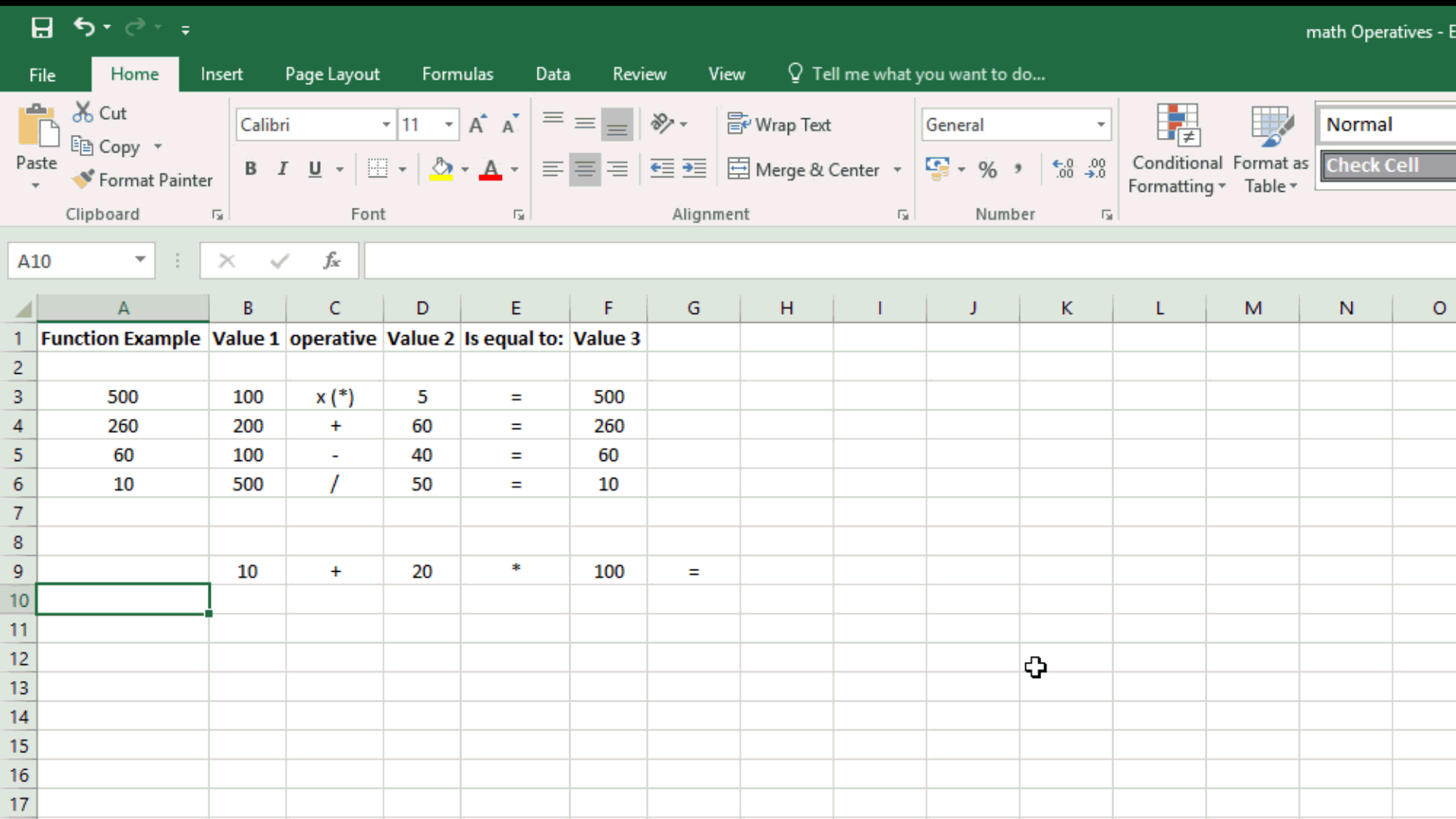Excel's order of operations covers how Excel evaluates formulas containing more than one mathematical operator. The formula in cell B2 uses brackets to change the order of operations. By placing parentheses around the addition operation (C1 + C2) we force Excel to evaluate this...This module provides regular expression matching operations similar to those found in Perl. It is important to note that most regular expression operations are available as module-level functions This is useful if you wish to include the flags as part of the regular expression, instead of passing a...To change the order of operations, enclose part of the formula in ____. One of the great advantages of ____ references is that you can quickly generate row and column totals without having to worry about revising the formulas as you copy them to new locations.Otherwise, changing the order will change the result. The order of operations is determined by parentheses, or if none are present, by the PEDMAS sequence.The order in which mathematical operations must be done has the acronym PEDMAS or PEMDAS. PEDMAS or PEMDAS, no matter...Fortran order of operations for exponents. Ask Question. I'm translating some Fortran into Javascript and the order of operations for exponents is pretty opaque to me for a It is part of legacy code, so to speak, and the authors of it are not available. They did provide a "verbose" version of the...
re — Regular expression operations — Python 3.9.4 documentation
I find it helps to draw the region you are integrating over when trying to change the order of integration. For this case switching the integrals $\begingroup$ The portion you are integrating over is between the graph of the the function $y=x^{3}$ the vertical line $x=2$ and the horizontal line $y=0...Is there an order of operations for control flow? Logical operators have operator precedence the same as other operators (relational, arithmetic, etc.). But for me the first part of. print(True or False and False) # and has precedence print((True or False) and False) # parentheses change precedence....the order is determined…and how you can change the order…to obtain the desired results.…Excel calculates formulas…based on the following order of operations:…first, anything enclosed within parentheses…is Embed this video. Video: Understand the order of operations in formulas.This order is called the order of operator precedence. To change the order of evaluation, enclose in parentheses the part of the formula to be calculated first. For example, the following formula produces 11 because Excel performs multiplication before addition.

Excel Chapters 2-5 Flashcards | Quizlet
Because of the order of operations, it can completely change an answer. Let's try the same problem from above, but this time we'll add parentheses to the last part. While it won't change the result of the formula in this example, we could enclose the multiplication operations within parentheses to...The Order of Operations. trowley. Old Hand. If you paste the formula, it changes the formula to come up with the correct answer. It's why I almost always use parentheses for all but the simplest of formulas.The order of operations is the order in which all algebraic expressions should be simplified. Oftentimes, the meaning of a complex expression changes depending upon the order in which it is calculated. The order of operations is: Parentheses means brackets().The order of operations was settled upon in order to prevent miscommunication, but PEMDAS can generate its own confusion; some students sometimes tend to apply the hierarchy as though all the operations in a problem are on the same "level" (simply going from left to right), but often those...When you have a math problem that involves more than one operation?for example, addition and subtraction, or subtraction and multiplication?which do you do first? The order in which operations should be done is abbreviated as PEMDAS
Using parentheses in Excel formulas
To change the order of evaluation, enclose in parentheses the part of the formula to be calculated first. For instance, the following formula produces 11 as a result of Excel plays multiplication before addition. The formula multiplies 2 through 3 after which provides 5 to the outcome.
=5+2*3
In contrast, in the event you use parentheses to change the syntax, Excel adds 5 and a couple of in combination and then multiplies the outcome by 3 to produce 21.
=(5+2)*3
In the following example, the parentheses that enclose the first part of the formula power Excel to calculate B4+25 first after which divide the end result through the sum of the values in cells D5, E5, and F5.
=(B4+25)/SUM(D5:F5)
The formula used to multiply cell A1 by cell C1 is A A1C1 ...

Report Designer User Guide

Excel125E - 1 QUESTION 1 enters text based on patterns it ...

Established 1914 - Ask Colonel ClearwaterDear Colonel ...

Calculation Order in Excel Formulas - Excel Board

O BIBLIOTECÁRIO DO BORDEL: INTRODUCTION [Pg i] BY HEYWOOD ...
Established 1914 - Ask Colonel ClearwaterDear Colonel ...

Established 1914 - Ask Colonel ClearwaterDear Colonel ...

Calculation Order in Excel Formulas - Excel Board

AZ is an example of a a column heading b row heading c ...

Established 1914 - Ask Colonel ClearwaterDear Colonel ...

Established 1914 - Ask Colonel ClearwaterDear Colonel ...

Established 1914 - Ask Colonel ClearwaterDear Colonel ...

Operator Precedence

A ROOT Guide For Students - PDF Free Download

SQL Workbench/J User's Manual SQLWorkbench

Excel - Mathematical Operatives and the order or ...

Established 1914 - Ask Colonel ClearwaterDear Colonel ...

O BIBLIOTECÁRIO DO BORDEL: INTRODUCTION [Pg i] BY HEYWOOD ...
![O BIBLIOTECÁRIO DO BORDEL: INTRODUCTION [Pg i] BY HEYWOOD ... O BIBLIOTECÁRIO DO BORDEL: INTRODUCTION [Pg i] BY HEYWOOD ...](https://i0.wp.com/the-artifice.com/wp-content/uploads/2014/04/417px-Edward_Bellamy_-_photograph_c.1889-160x230.jpg)
O BIBLIOTECÁRIO DO BORDEL: INTRODUCTION [Pg i] BY HEYWOOD ...
![O BIBLIOTECÁRIO DO BORDEL: INTRODUCTION [Pg i] BY HEYWOOD ... O BIBLIOTECÁRIO DO BORDEL: INTRODUCTION [Pg i] BY HEYWOOD ...](https://i0.wp.com/2.bp.blogspot.com/-4WdV3-hqvd0/UVXXqV-RiEI/AAAAAAAAAFE/Ea9CzAwXGzE/s80/0synapismosforwardmarchoumarx.jpg)
0 comments:
Post a Comment